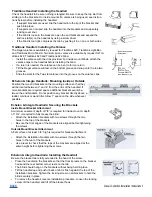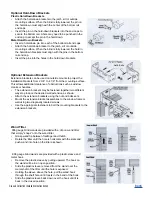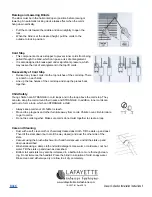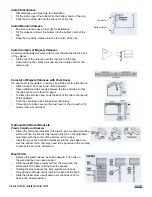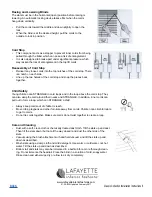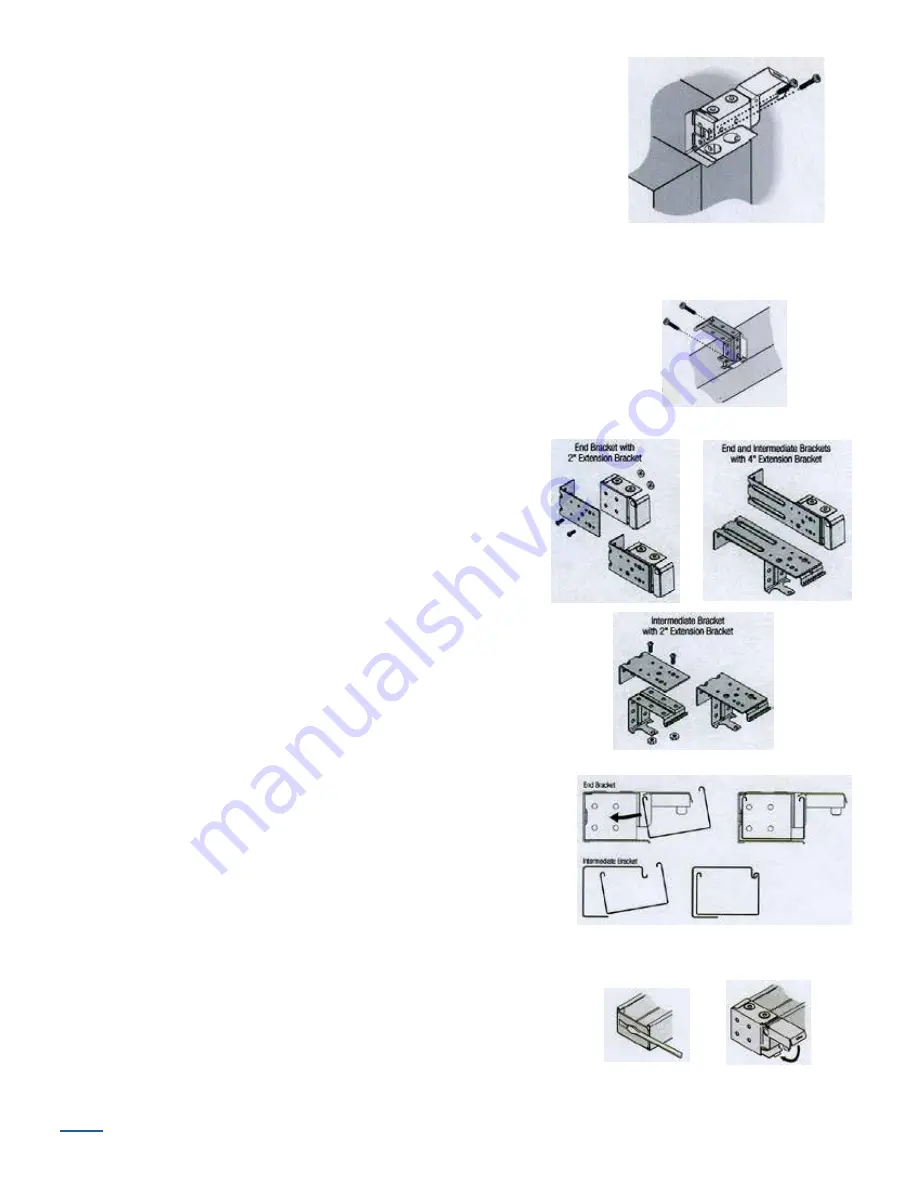
Classic Collection Installation Instructions 7
BACK
Mount the Headrail
• Tilt the headrail so that its back lip slides under the front lip of the end
brackets and intermediate bracket(s).
• Push the headrail against the back of the end brackets.
• Check that the front lip of the intermediate bracket(s) is under the front
lip of the headrail.
Adjust Headrail Tightness
• If the headrail is loose in the end brackets, bend the tabs on the end
plates outward.
•
The tabs may bent inward if the headrail was difficult to install into the
end brackets.
Close End Brackets
• Push the cover down until it snaps over the locking tab on the bottom
of the bracket.
Outside Mount
A flat surface of at least 1 3/4” high is required for bracket attachment
• Mark where the ends of the headrail will be located.
• Either hold the headrail up to the mounting surface or measure the headrail
and mark its length.
• Then mark 1/4” to the outside of the headrail marks.
Attach End Brackets
• Align the outside edge of each bracket with the outer marks.
• The tops of the brackets must be aligned at the same height.
• Attach the brackets with two screws through diagonal holes.
Intermediate Brackets
Evenly space the intermediate bracket or brackets between the two end brackets.
• Adjust spacing if needed to avoid interference with the internal headrail
mechanisms.
• The top of each intermediate bracket must be aligned with the tops of
the end brackets.
• Attach bracket(s) with two screws through diagonal holes.
Optional Extension Brackets
Extension brackets can be used on outside mounts to project the
installation brackets from the mounting surface. This allows additional
clearance of obstructions such as window cranks or handles.
• Align and level extension brackets with a carpenter’s level.
• Attach the extension brackets using the nut and bolts sent.
• Mount the extension bracket(s) to the window frame or wall using
two diagonally located screws.
• Use the appropriate fasteners to bolt the mounting brackets to the
extension brackets.



